Tips on how to Forestall Your Ski Goggles From Fogging
A high quality pair of ski goggles can do so much to enhance visibility on the slopes, but when they get all fogged up, it doesn’t actually matter what you’re sporting. The excellent news is that there are a selection of steps you’ll be able to take to keep away from this irritating scenario, which we break down under. The first intention is to maintain air flowing and restrict moisture buildup, and a variety of things—from avoiding overdressing to permitting your goggles to dry utterly after every use—come into play. Lastly, in case your previous pair has bit the mud, try our article on the very best ski goggles.
Why Do Goggles Fog Up?
Earlier than diving in, it’s essential to grasp why goggles fog up within the first place. The science is pretty easy: When heat and humid moisture enters your goggles and comes into contact with the chilly lens, the water vapor condenses into droplets and accumulates. Lots of the ideas under are geared toward maximizing air flow to scale back the quantity of moisture coming into your goggles and minimizing any temperature variations between the within of your lens and out of doors setting. Different preventative measures embrace correct drying and storage strategies to protect your goggle’s anti-fog coating, which may go a good distance in retaining long-term optical readability.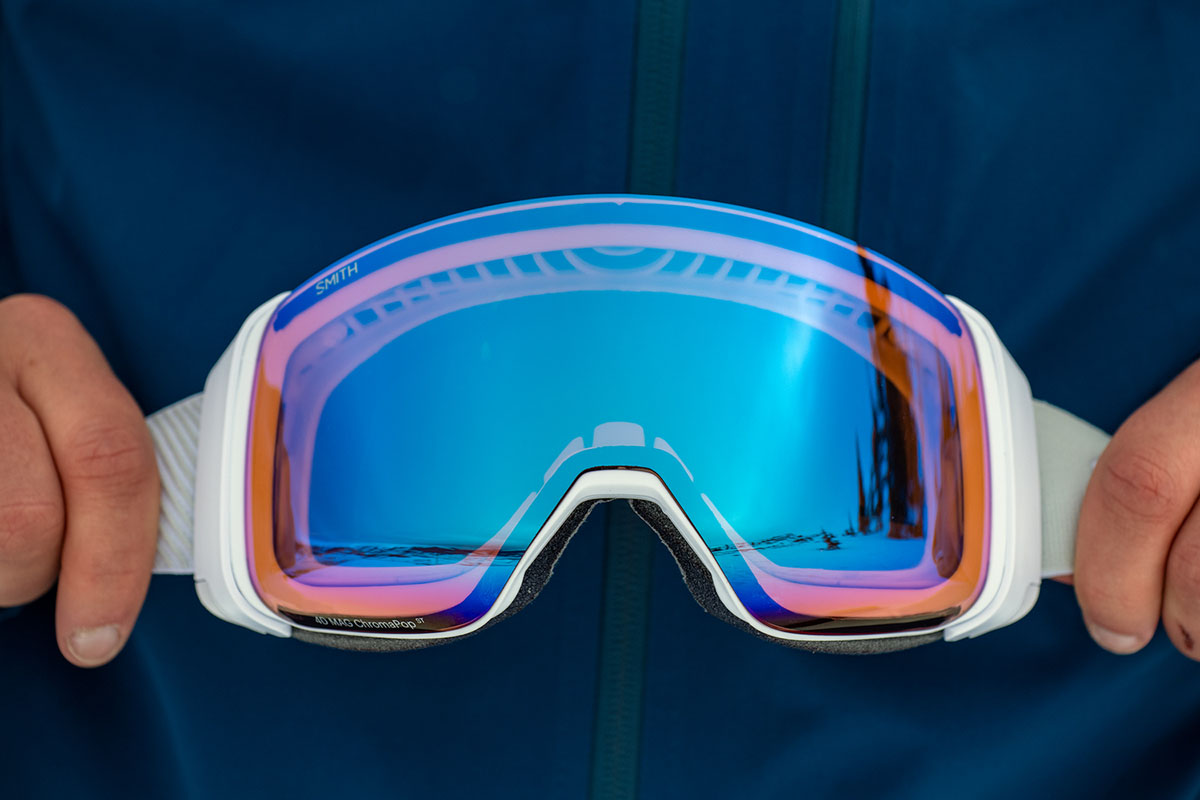
Fog Prevention Suggestions
1. Select a top quality pair of goggles
Step one in minimizing fogging is to decide on a top quality snow goggle with well-executed air flow. Firstly, you’ll need to go for a mannequin with a double lens—related in idea to a double-pane window—which contains most trendy goggles. Body design can also be essential: If air can transfer successfully by the perimeters, prime, and backside, condensation received’t have the ability to construct up as rapidly inside. All else being equal, a goggle with extra vents will fog up much less incessantly than one with fewer, though it’s essential to make it possible for your helmet doesn’t block your goggles’ vents (we suggest attempting them on collectively). Lastly, lens form can have an effect: Spherical lenses—which curve each horizontally and vertically—are typically the very best at stopping fog attributable to their bulbous form that positions the lens farther out of your face, whereas cylindrical lenses (that are flat vertically) are sometimes least efficient. After all, there are exceptions to this rule, and a goggle’s venting design is the most important contributor.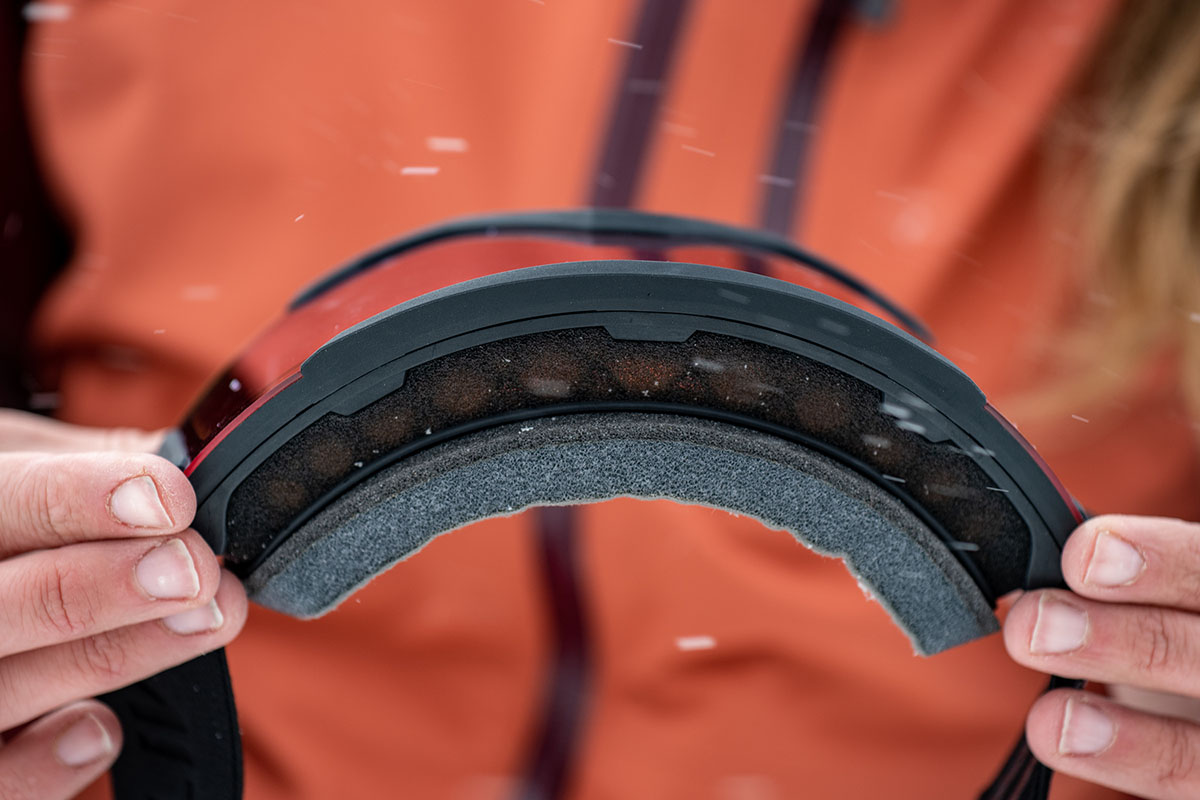
A last piece of the goggle design puzzle is the anti-fog coating. This hydrophilic (i.e., moisture-attracting) barrier is utilized to the within of the lens and designed to disperse any moisture throughout the floor in order that mild can nonetheless make its manner by (any water that accumulates might be film-like moderately than droplets, which makes it a lot simpler to see). We’ve discovered Smith’s anti-fog therapy to be notably environment friendly and long-lasting, and it is featured on fashions from their premium I/O Magazine to the budget-friendly Vary. Loads of others excel right here, too, together with Anon, Glade, and Oakley. To maximise effectiveness, you’ll need to make sure that to get a superb match with a stable, gap-free seal at your brow and cheeks. And remember that any extra materials inside your lens will affect airflow, so if you wish to put on glasses underneath your goggles, think about buying prescription inserts from a model like SportRx or sporting contacts as a substitute.
2. Pair with a well-ventilated helmet
Goggles are only one a part of the equation, and a well-ventilated ski helmet may also help significantly with conserving air transferring and also you from overheating. The primary indicator of total air flow is the full variety of vents, with pricier lids sometimes boasting greater than funds designs. As an illustration, Anon’s top-of-the-line Merak ($320) encompasses a beneficiant 19 vents, whereas their budget-friendly Raider 3 ($90) has solely six. One other key distinction to look out for is whether or not or not the vents are adjustable. Mounted vents can enable undesirable moisture and chilly air inside, whereas adjustable vents permit you to higher regulate temperature relying on output and situations. Taken collectively, an efficient helmet venting system ought to direct air out of your goggles by intakes on the entrance and launch the warmth out the highest and again.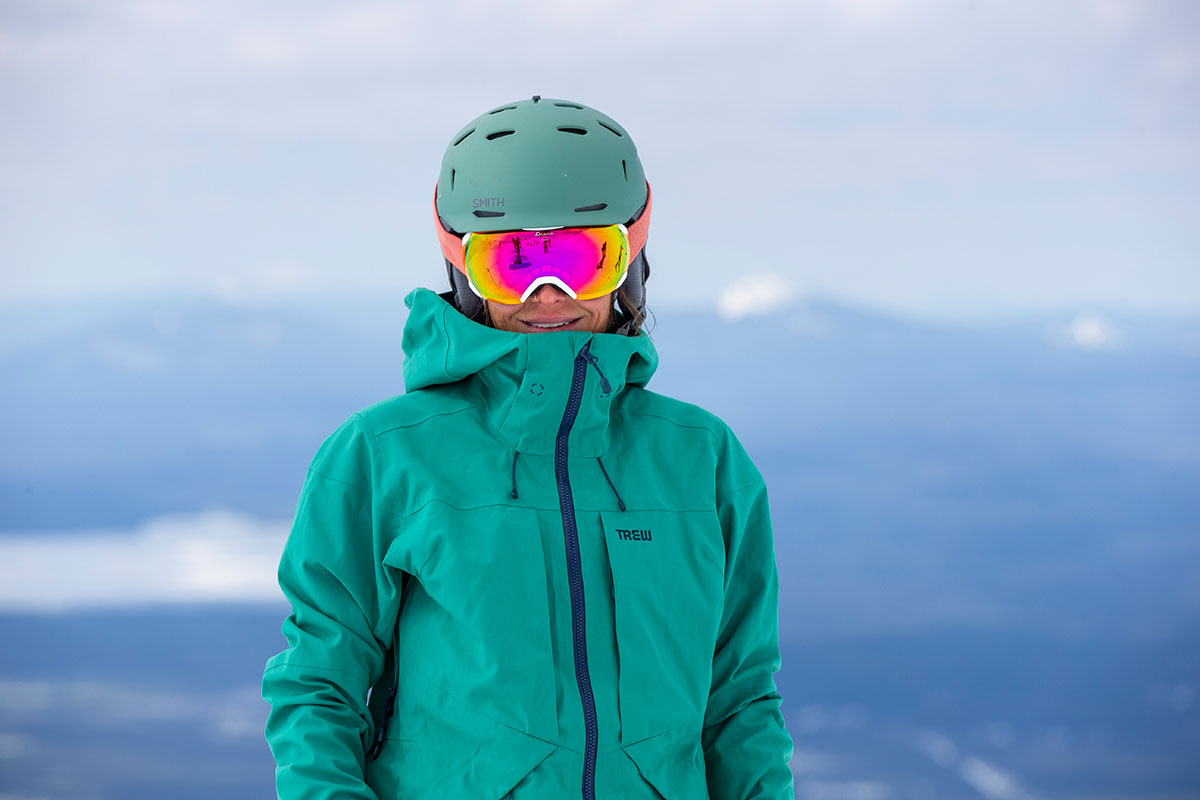
3. Resist wiping the inside lens
We’ve all been tempted to pop our goggles off and wipe snow or moisture off our inside lens on inclement days or after a fall, however be forewarned: This may trigger injury. Along with probably scratching or smudging an expensive lens, wiping can also degrade your goggle’s anti-fog coating or movie. As onerous as it might be, we suggest permitting your goggles to air dry at any time when potential.
Many premium choices additionally include an included micro-fiber storage bag or wipe, which may also help blot mild powder off or clear up any water streaks if the scenario is especially dire. By no means scrub or use paper merchandise like paper towels or napkins, as these are way more abrasive and may injury your lens. Smith presents a pair low cost options of their NoFog fabric (coated in a powerful detergent to maintain your lens clear) and Snow Eraser (a mushy sponge to wipe away moisture). However once more, leaving your lens alone when it will get moist is the most secure wager for enhancing its lifespan and preserving the anti-fog therapy (we cowl the reapplication course of under).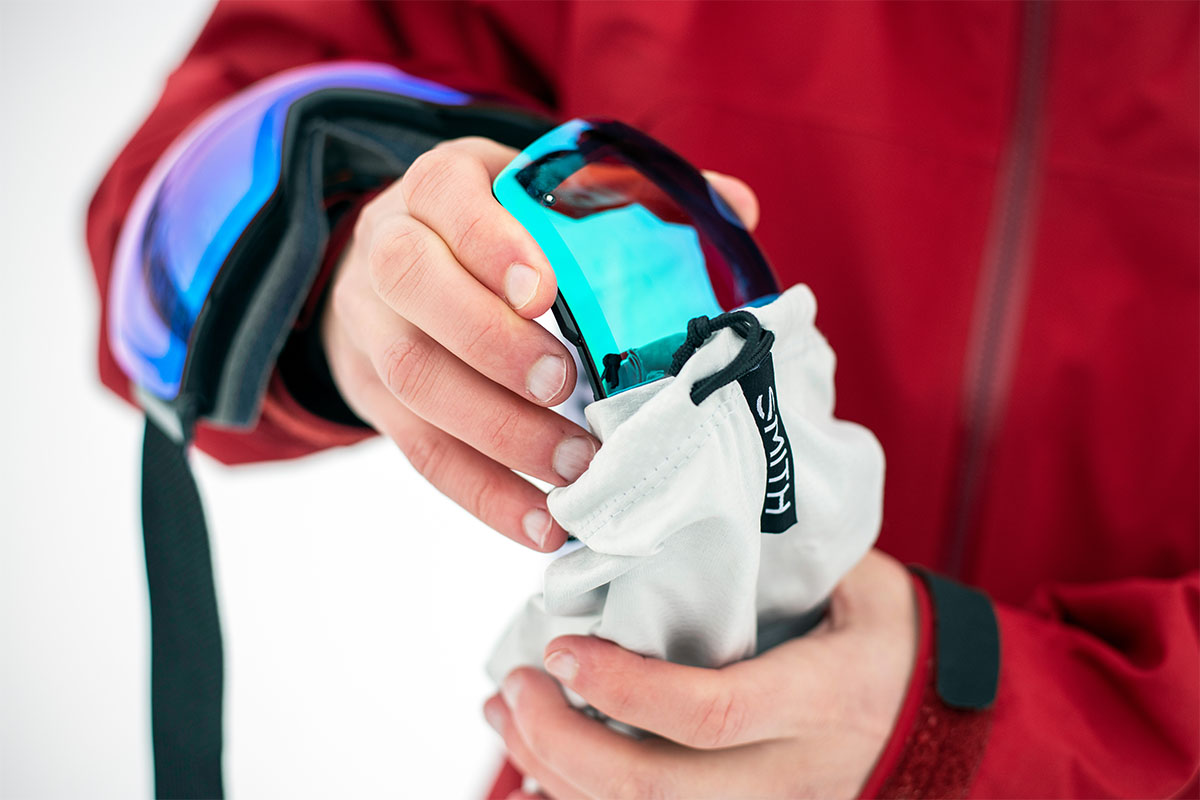
4. Keep away from placing your goggles on prime of your helmet
As we lined above, your goggles and ski helmet work as an built-in unit to maneuver air up and away out of your face. Transferring your goggles to your brow will trigger the warmth and moisture emanating there to fog up (keep in mind that warmth rises), so it’s essential to maintain your goggles on through the ski day. For those who’re coping with an uncomfortable match or visibility points from fogging or fingerprints, we’ve discovered that rigorously lifting them off our face barely for a number of seconds (a superb chairlift exercise) could make a world of distinction. If it’s an ongoing downside, attempt popping into the closest lodge to let your goggles dry out utterly earlier than rigorously and gently dabbing or blotting any downside areas with a microfiber fabric or working them underneath a hand dryer (preserve them a substantial distance away, as an excessive amount of warmth might be detrimental). 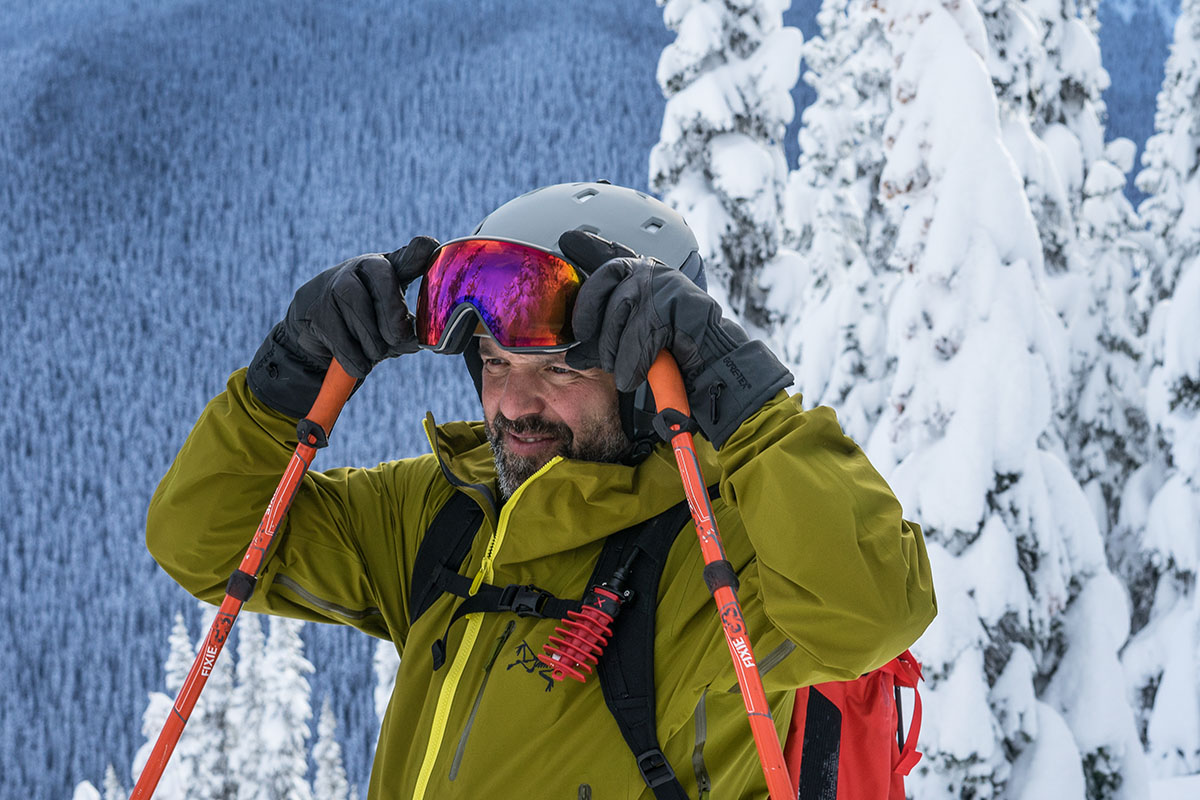
5. Preserve the vents away from snow
Maintaining your goggle and helmet vents freed from snow and different particles will assist them carry out at their finest, as any blockage will inevitably inhibit a number of the venting talents. In case your ski gloves have snow on them, be sure you brush it off earlier than touching your face or making any changes to your helmet or goggles. After a fall, it is likely to be essential to take both or each off and thoroughly faucet them to clear any extra moisture. And once more, bear in mind by no means to wipe moist goggles with gloves—this can solely exacerbate fogging points and probably trigger irreversible injury to the lens.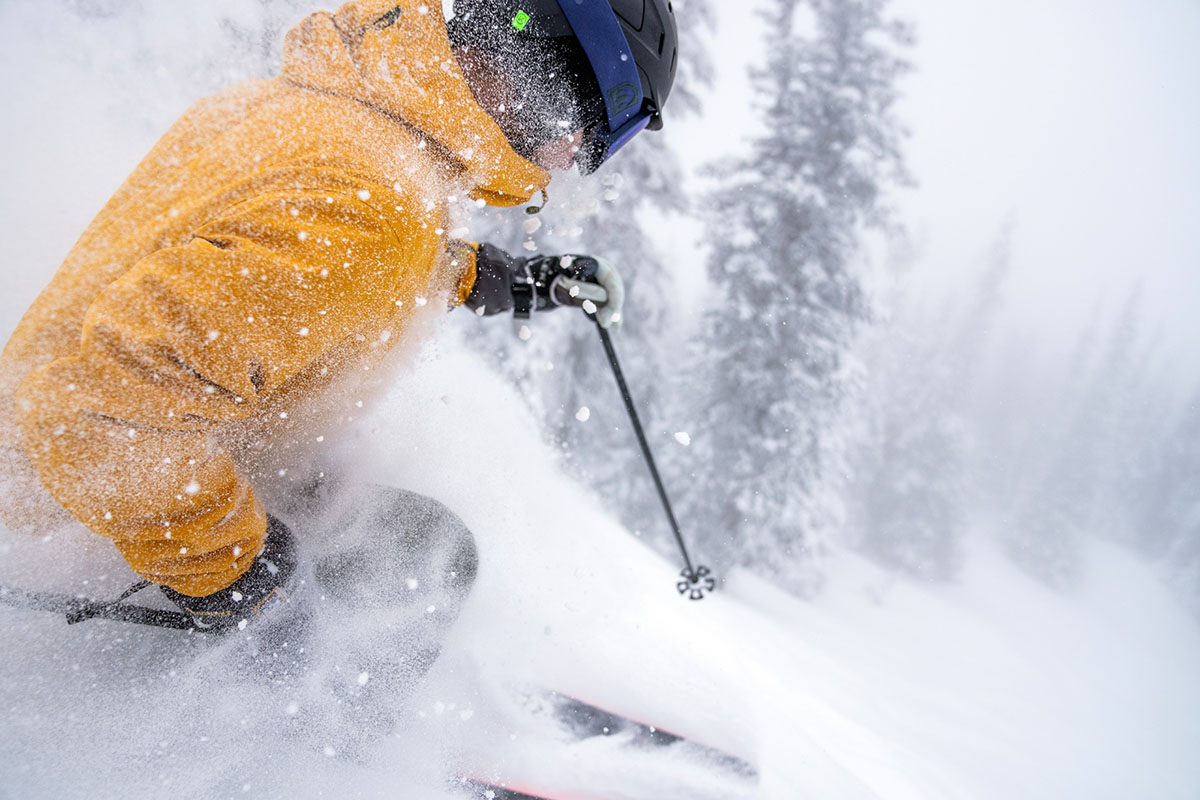
6. Do not overdress
Overdressing is a fast strategy to construct up extra warmth, which can inevitably result in condensation buildup. In case your layering system isn’t tuned correctly for the situations, this may trigger your physique, face, and head to sweat extra, which makes it more durable in your goggles and helmet to maintain up with temperature regulation. Our go-to ski package sometimes features a high quality moisture-wicking baselayer, appropriately insulated midlayer (fleece, down, or artificial), and protecting and breathable hardshell or uninsulated ski jacket overtop (we search for ones with pit zips to dump extra warmth rapidly). Those that run chilly or ski specifically frigid areas would possibly think about choosing an insulated ski jacket or 3-in-1 design, however we actually worth the flexibility to shed layers as situations (and our output degree) shift.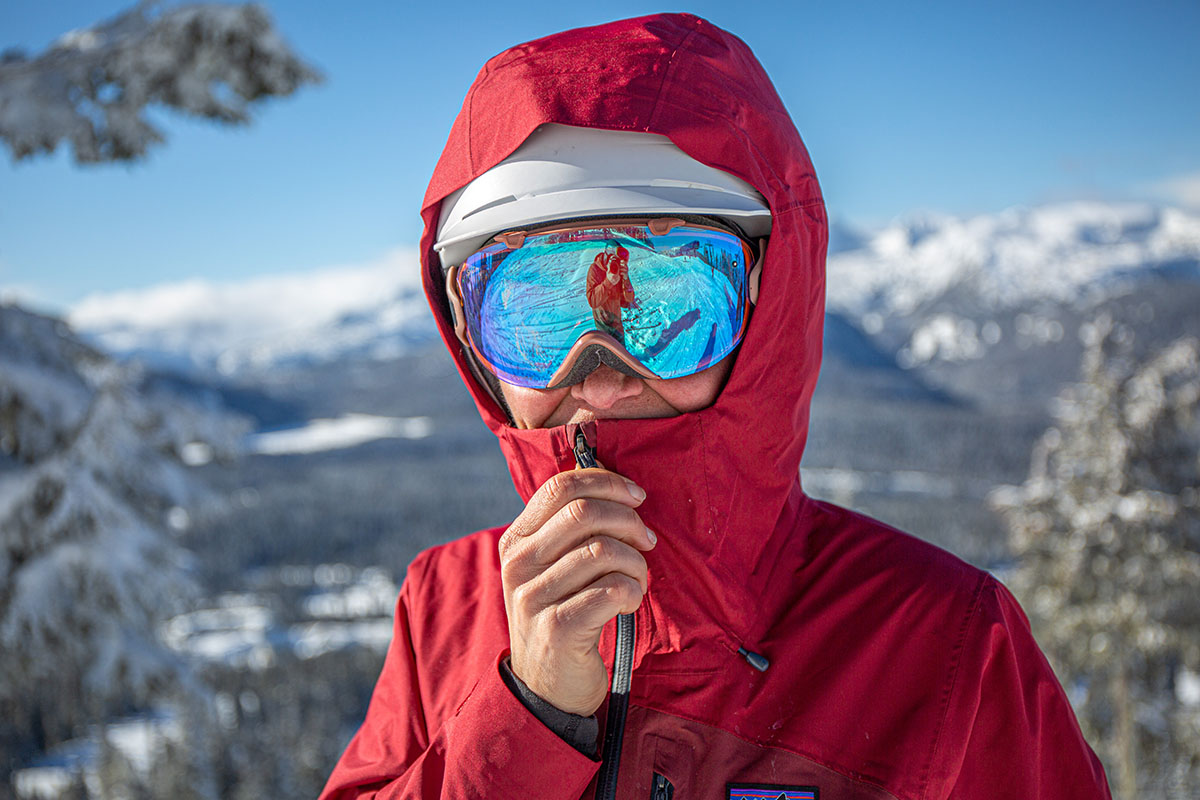
7. Preserve transferring
This one may appear pretty apparent, however staying in movement retains air flowing and due to this fact minimizes the chance of working into fogging points. It’s not all the time potential, however in case you’re coping with persistent temperature management points, attempt in search of out longer runs or shorter chairlift traces. The circulation of colder air round your face will assist extra moisture evaporate faster.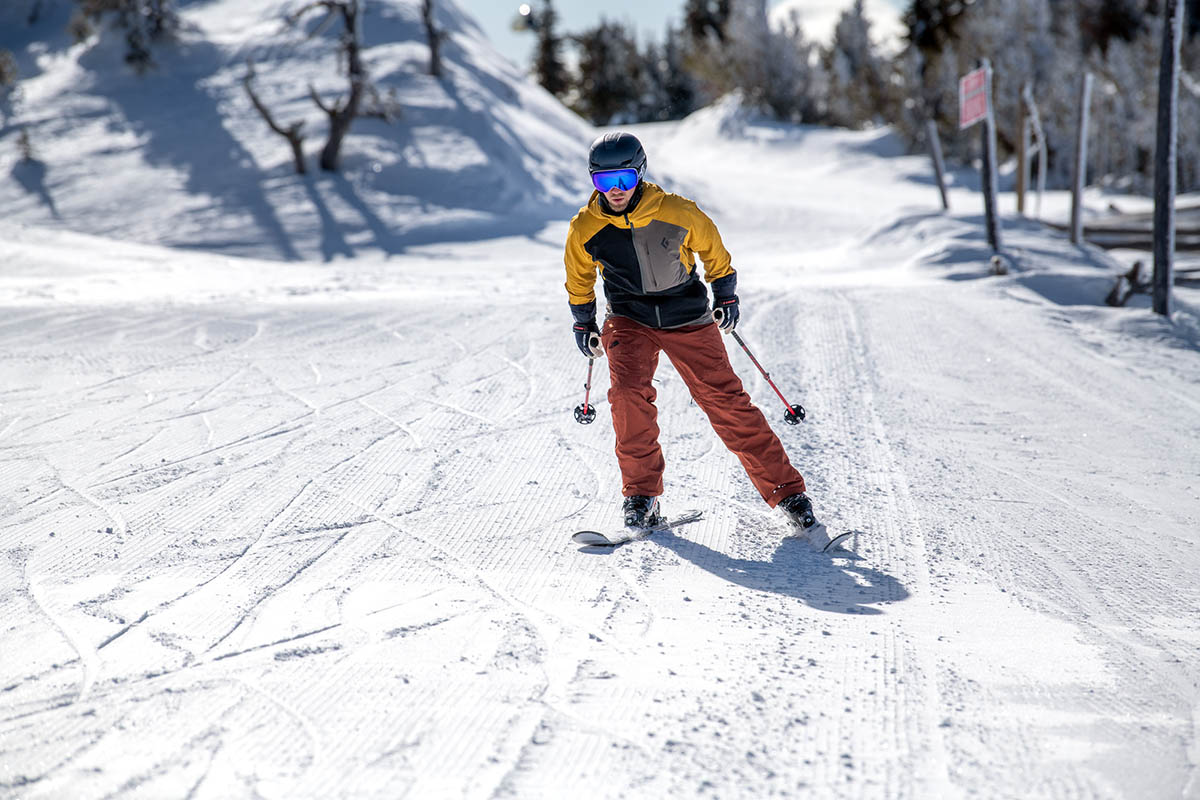
8. Use a masks or balaclava that breathes properly
Many skiers use a buff or neck gaiter to maintain their neck and decrease face lined and protected against the weather, however the draw back is that heat breath can typically be blown up into your goggles and fog up your lens. Using a lightweight and breathable design is step one towards minimizing condensation buildup. We like Smartwool’s Thermal Merino Lengthy Neck Gaiter for its odor-resistant properties and mushy really feel, and Buff’s Unique Multifunctional balaclava is a confirmed artificial different that breathes very properly. And a last observe: You is likely to be tempted to tuck your neck gaiter into your goggles on chilly days, however this can nearly inevitably result in moist, moist particles out of your breath making their manner up and into your lens. If potential, preserve a small hole between your goggles and masks to keep up a pathway for warm air to flee.
9. Preserve a backup pair or lens helpful
If all else fails, it’s all the time useful to have a backup pair of goggles or an additional lens helpful. It doesn’t must be something fancy—in case your goggles are fogged up, even an ultra-cheap pair will in all probability be a step up by way of visibility and work lengthy sufficient in your go-to pair to dry out utterly. Bolle’s Freeze is a confirmed funds possibility that can get the job accomplished for simply $30. Many high-end snow goggles additionally include two lenses, so swapping them out could be a viable resolution offered the situations enable for it (some tints aren’t appropriate for socked-in or bluebird days). When making the change, simply be aware to restrict contact with the lens along with your fingers or gloves.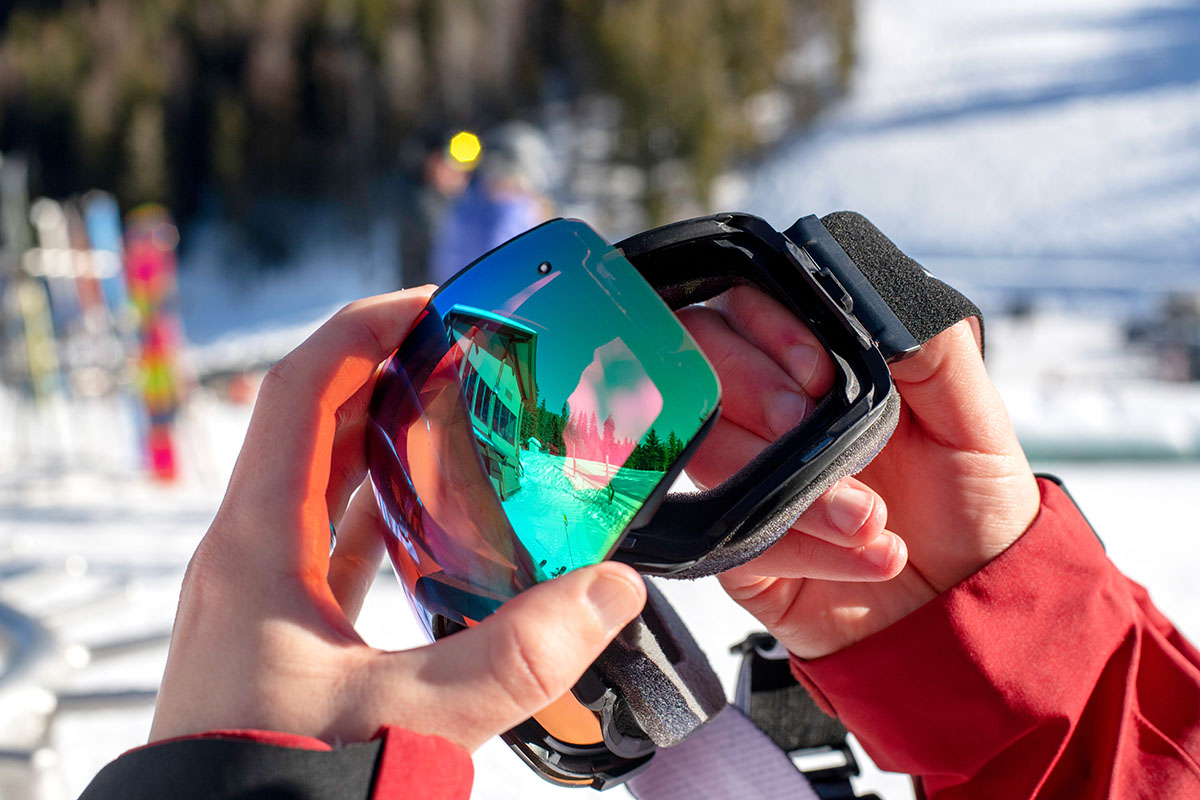
10. Let your goggles dry on the finish of the day
Correct care and storage are important for conserving your goggles in prime situation, and the very best follow is to allow them to dry utterly on the finish of every ski day. We advise putting them on a clear floor in a dry, heat place and letting gravity do the remainder of the work. Be certain to not go away damp goggles in your chilly automobile or buried in your ski bag in a single day, and keep away from utilizing a blow-dryer to expedite the method (once more, an excessive amount of warmth can probably degrade the anti-fog therapy). As soon as dry, it’s finest to retailer your goggles in a microfiber or hard-sided case to forestall mud and different particles from accumulating on the lens when not in use. This may also assist restrict scrapes or scratches from packing them with different gear.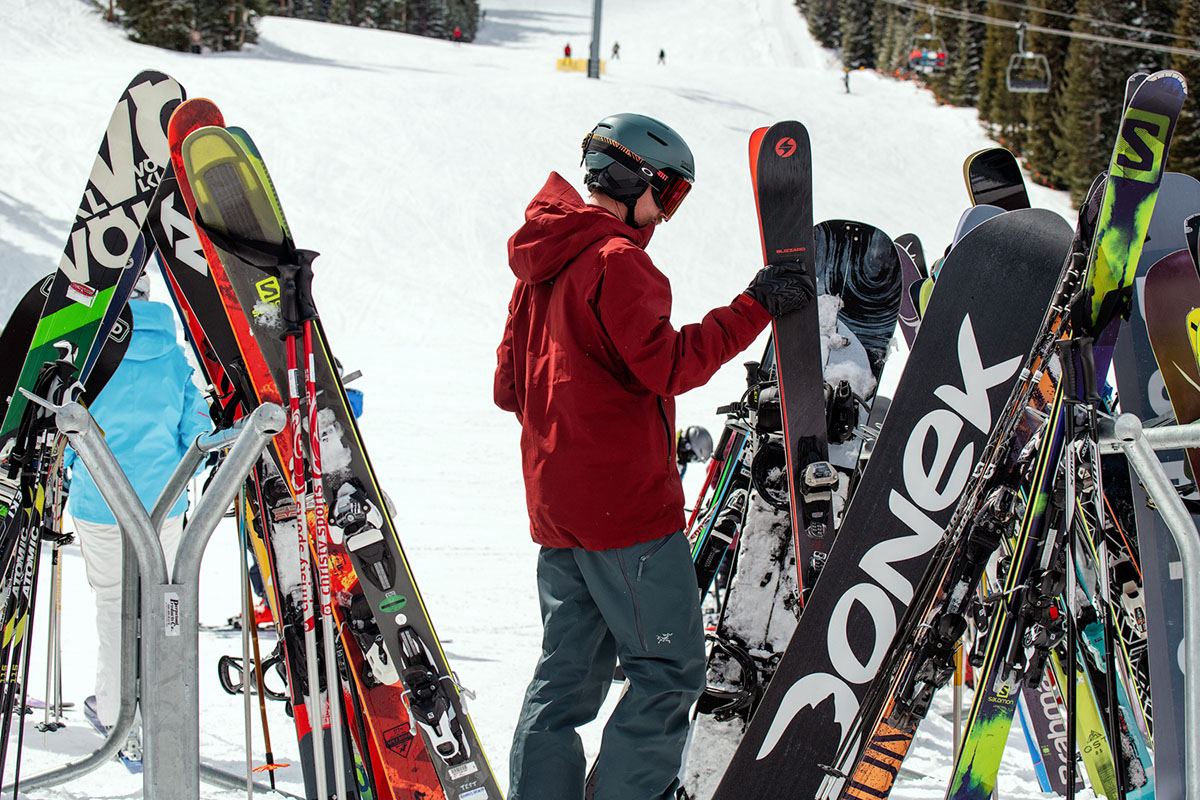
11. Reapply an anti-fog coating to previous goggles
For those who’re following the information above and your previous goggles proceed to fog up, it might very properly be time so that you can buy a brand new pair. For the DIY-inclined amongst us, nevertheless, it might be potential to get a bit extra life out of your goggles by reapplying an anti-fog therapy. Needless to say outcomes can differ relying on elements like age and situation of your goggles, and there’s no standardized methodology or product for reapplication, so it might take a while to search out one thing that works (and once more, there’s a risk that it may not for lengthy or in any respect).
As a primary step, we suggest reaching out to the producer on to see what they suggest. Optics specialists Warby Parker and Zeiss each make spray-on remedies with a variety of good critiques to their title, and two different in style choices are Optix 55’s Fog Gone and EK USA’s Cat Crap balm. Be sure you observe the directions rigorously and solely use mushy, nonabrasive microfiber cloths to work in any coating. In case your lenses are scratched or broken in any manner, you’ll be able to attempt sprucing with a product like Meguiar’s PlastX Clear Plastic Cleaner & Polish (generally used for headlights) or PolyWatch’s Crystal Glass Polish & Scratch Remover (designed for sprucing watches), however these are inclined to solely work on minor floor scratches. Ultimately, the one sure-fire manner of restoring readability totally is to buy a brand new pair or substitute the lens, however we will admire the worth in extending your gear’s lifespan for so long as potential.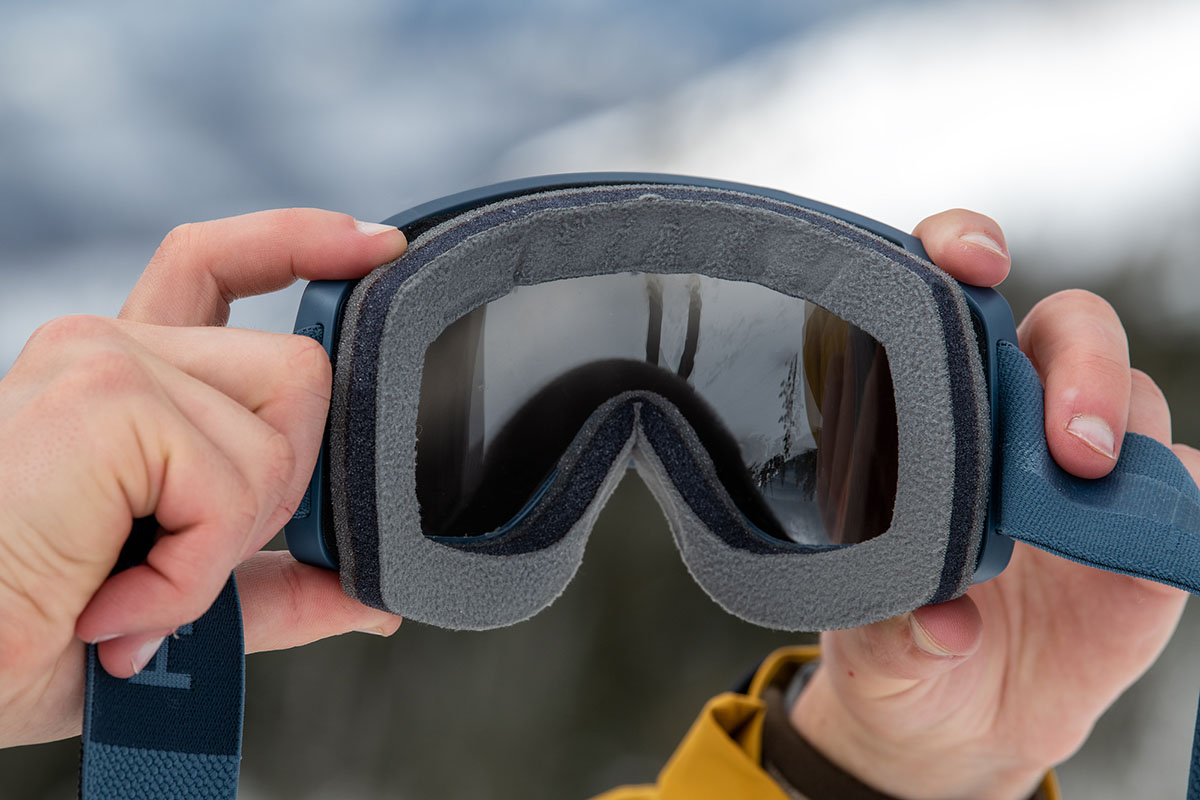
12. Anti-fogging tech and heated goggles
We lined anti-fog coatings above, however there are a pair different progressive fog prevention applied sciences value calling out straight. First is Julbo’s SuperFlow Professional tech discovered on their premium Lightyear and Lightyear OTG fashions. With hinges on the perimeters of the body, you’ll be able to push the lens away to create sufficient separation to rapidly dissipate moisture and keep away from fog buildup. That is particularly nice for these with persistent fogging points throughout down instances (equivalent to on the carry) or if you wish to put on your goggles throughout high-output actions like ski touring or sidecountry mountaineering. You’ll have to push the lens again into place on the downhill, however as we lined above, fogging is much less of a problem while you’re transferring at a superb clip.
Alternatively, there’s a small however rising section of heated goggles available on the market, together with the 509 Kingpin Ignite and Nordik Eyewear Viking. These designs operate equally to the windshield defroster in your automobile by utilizing heated air to forestall condensation from forming on the lens. The items are properly built-in alongside the aspect of each goggles, however they do add a superb quantity of bulk and provides off a reasonably polarizing and utilitarian look.
As a last resolution, some tech-savvy skiers have turned to aftermarket paintball followers, that are designed for paintball goggles or masks to reduce condensation buildup by conserving air transferring. By taking a pair of normal ski goggles and tacking on the fan, the online result’s similar to Smith’s since-discontinued Turbo Fan tech featured of their I/OX Turbo Fan and tactical Outdoors the Wire Turbo Fan goggles. Whereas undeniably progressive, this resolution has decidedly restricted attraction for many riders. For those who’ve exhausted the information above and fogging stays a constant challenge, we’d level you to Julbo’s confirmed SuperFlow designs—no McGyvering required.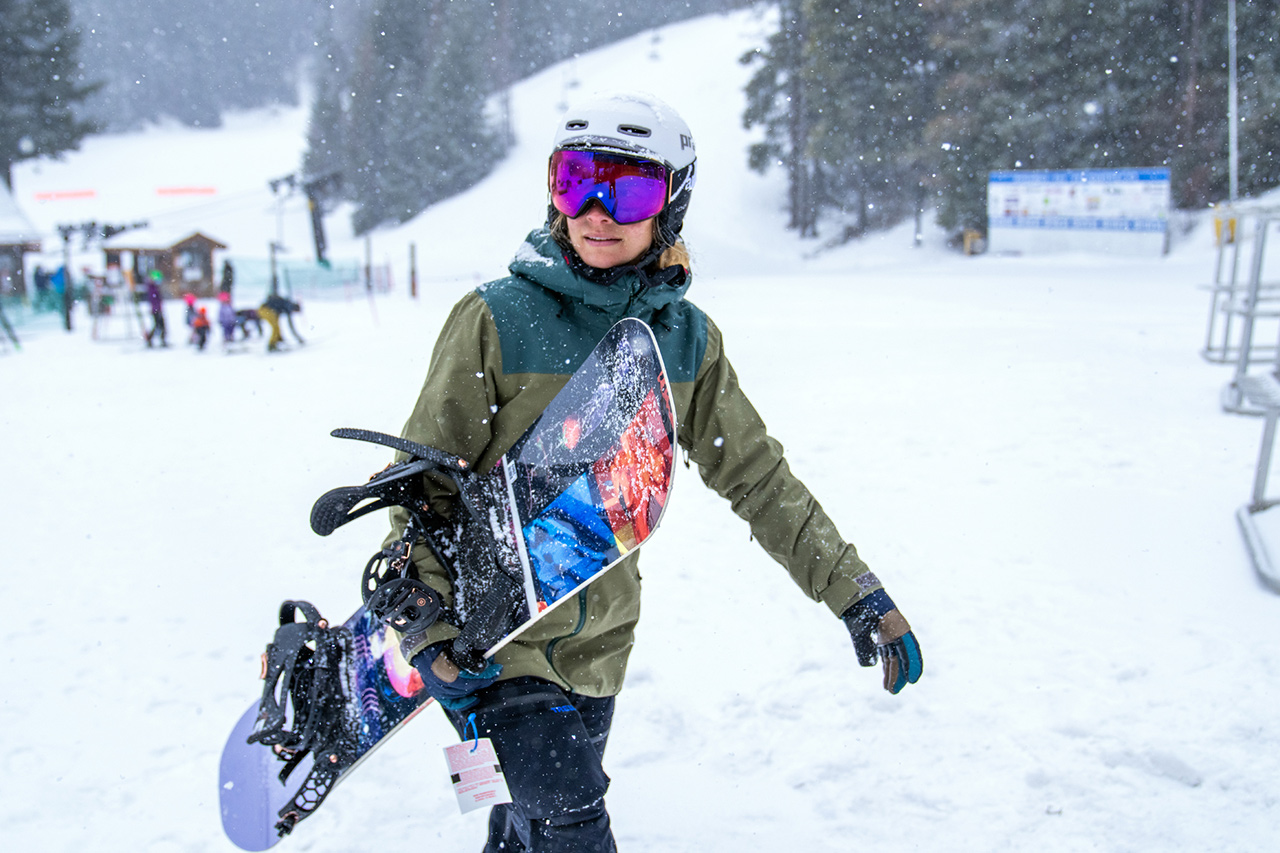
Our High Ski Goggle Picks
For those who’re nonetheless in search of the proper pair of goggles for this season, under are our prime picks throughout varied classes, from budget-friendly to backcountry-ready. For a extra complete listing, in addition to detailed background info and shopping for recommendation, see our article on the very best ski goggles of 2024.
Again to Our Anti-Fogging Suggestions See Our Ski Gear Opinions






.jpg?w=1200&resize=1200,0&ssl=1)